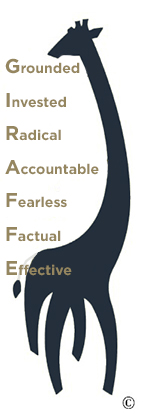Written By Victoria Trabosh, CEC
Situation:
“I was recently hired to deliver feedback from a leadership 360 online assessment. The client ‘freaked out’ and refused to hear the feedback. What should I have done and how could I have handled the situation better?”
This is not uncommon, but without the context of the situation, I have more questions than answers. I’ll eventually be sharing a concept with you that is the acronym LALA. (Teaser, that’s all I’m saying right now!)
Here are my questions:
Beyond delivering feedback, did you administer the 360? How were participants prepared before they received the assess- ment? What were your client’s expectations of the 360? How have 360s been delivered in the past at this company? What is the credibility of this tool to create awareness, change, and empower the person being assessed? While this is not an uncommon occurrence, did you feel as if the 360 was full of bad news? Is coaching a tool used throughout the company or only with employees facing problems?
As an executive coach for 18 years, assessments of all kinds become labels, not tools. A wide range of companies offers the 360 evaluation, and frankly, the results are as good as the prework done to prepare the assessors, conversations with the one being evaluated, and participation and acceptance and usefulness of this tool at the highest levels of the company. What often (too often) happens is that this tool, in particular, is used to anonymously ‘confirm’ bad news to the receiver. I have never met an executive who took this who wasn’t nervous about receiving the feedback and spent more time focusing on the bad news than the good. Often, strong leaders minimize what they believe to be fair and maximize surprising or written bad news. I’ve heard it 100 times: “I know who said that!” when receiving sharp or direct negative feedback. Whether they are right or wrong, there is a problem. The coach must bring them back to the table to discuss the comment, not the accused assessor.
If you can, try and engage the client once more using the concept of LALA. “Look, Ask, Listen, Acknowledge.” Developed by Jill Syle, author of Reinvesting in Your Rhetoric and my Harvard Professor who teaches advanced communication skills, it’s the process of slowing down before we react. Help your client learn LALA. I ask you to try it with them.
The 360 is done. Don’t let it create unease in your client. Try again, knowing this work is vital for their success.
Read the whole article HERE
Published in, and reproduced with permission from, choice, the magazine of professional coaching www.choice-online.com
Tags: Choice Magazine, feedback, sticky situation, Victoria Trabosh






